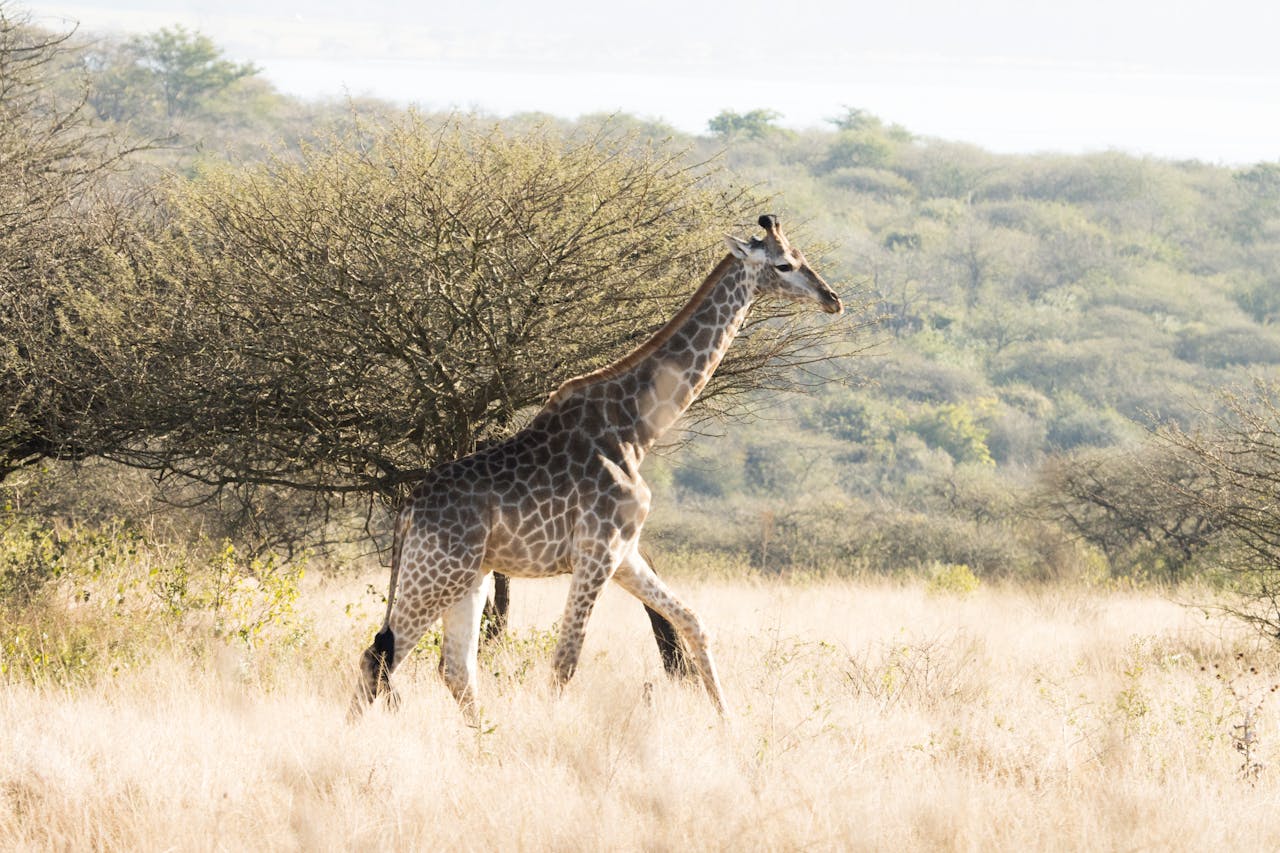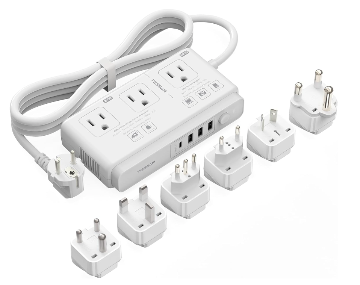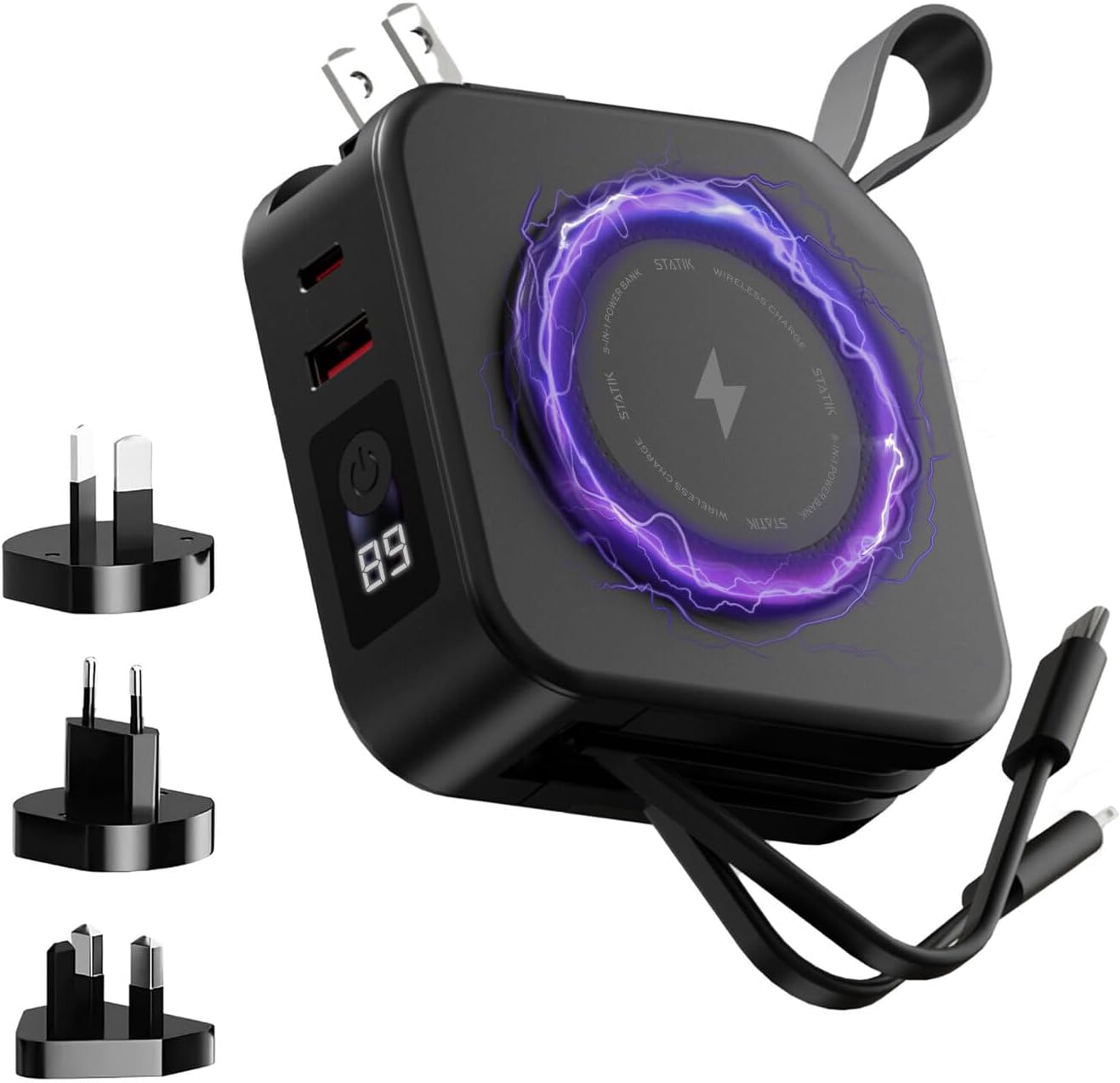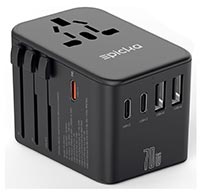📋 Table of Contents ▼
Introduction
Kruger National Park spans 19,485 square kilometers of pristine African wilderness. It's home to the Big Five and offers something most other world-class safari destinations don't: the freedom to explore on your own.
You can drive yourself through lion territory. Watch elephants from your car window. Navigate dirt roads where leopards might cross your path at any moment.
This isn't your typical safari experience where you're confined to a tour group's schedule. Here, you set the pace. Stay at that waterhole for hours if elephants are drinking. Turn around and follow fresh lion tracks. The choice is yours.
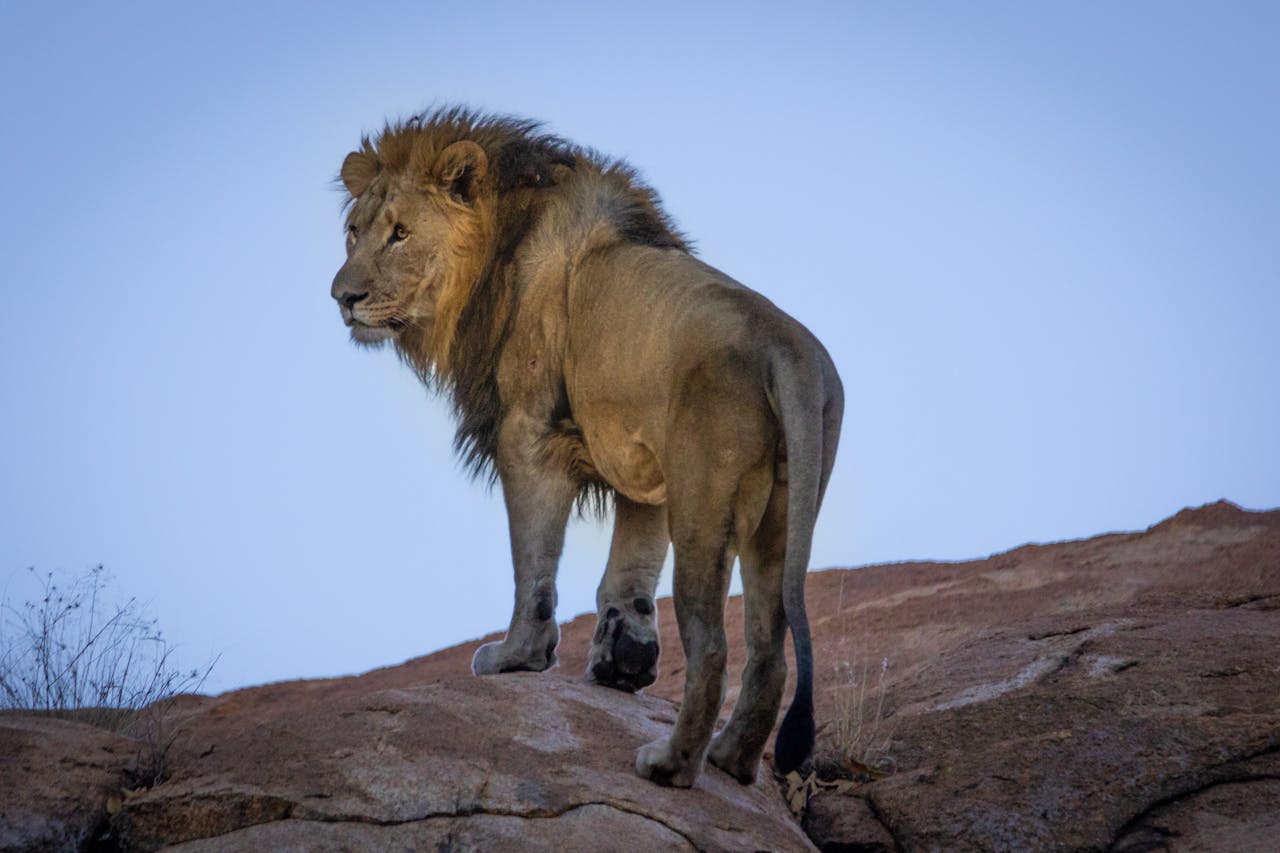
But this freedom comes with responsibility. You need to understand the park's rhythms, respect its rules, and prepare properly. That's what this guide covers.
Getting to Kruger National Park
Flying In
Most international visitors land at Johannesburg's OR Tambo Airport. From there, you have three options that actually matter.
Kruger Mpumalanga International Airport sits closest to the southern section. Daily flights from Johannesburg take 90 minutes. This gets you to the park's most popular area fastest.
Hoedspruit Airport serves the central region. Smaller than KMIA but still handles regular flights. Many private lodges prefer this gateway.
Skukuza Airport lies inside the park itself. Tiny airstrip. Charter flights only. If your lodge offers this option, take it.
Driving Yourself
The drive from Johannesburg takes 4-6 hours depending on your route and stops. Roads are excellent. You'll pass through typical South African countryside before the landscape shifts to bushveld.
Many people combine this drive with the Panorama Route. Blyde River Canyon. God's Window. Bourke's Luck Potholes. It adds time but breaks up the journey nicely.
Fuel stations appear regularly. No need to worry about running out of petrol.
Transfer Services
Private transfers cost more but remove the stress. Professional drivers know the roads. They'll pick you up at the airport and deliver you to your accommodation door.
Shuttle services offer a middle ground. Shared transfers cost less than private ones but take longer due to multiple stops.
Best Time to Visit Kruger National Park
Dry Season (May to October) - The Safari Sweet Spot
This is when most people visit. For good reason.
Vegetation thins out. Animals concentrate around permanent water sources. You can spot them easier. Temperatures stay comfortable during the day, though mornings and evenings get chilly.
The trade-off? Everyone else knows this too. Expect crowds, especially around popular waterholes. Prices peak during these months.
July and August offer the best wildlife viewing but the coldest weather. Pack warm clothes for early morning drives.
Wet Season (November to April) - The Green Season
Everything changes when the rains come. The bush explodes into lush green. Baby animals appear everywhere. Bird life becomes spectacular.
But thick vegetation makes spotting animals harder. Temperatures soar up to 40°C. Afternoon thunderstorms can be intense. Malaria risk increases.
The upside? Fewer visitors. Lower prices. Dramatic skies and landscapes that photography enthusiasts love.

The Sweet Spots
May-June and September-October offer the best balance. Good wildlife viewing without peak season crowds. Comfortable weather. Reasonable prices.
December-February brings heat and humidity but also young animals taking their first steps. If you can handle the weather, it's magical.
Understanding Kruger's Regions
Kruger isn't one uniform landscape. It's four distinct regions, each with its own character and wildlife patterns.
Southern Region - Where Most People Start
Dense vegetation creates natural hide-and-seek between you and the animals. This challenges beginners but offers incredible sightings once you develop your eyes.
Rhinos prefer this area. So do most first-time visitors. The shortest distances between camps make it easiest to navigate. More entrance gates mean more access options.
Popular camps like Skukuza and Lower Sabie book up fast. The infrastructure here handles the crowds better than anywhere else in the park.
Central Region - The Predator Zone
Open grasslands stretch to the horizon. Perfect for watching herd animals and the predators that follow them.
Lions rule here. Cheetahs too. Huge herds of zebra, buffalo, and wildebeest create natural theater when predators show up.
Satara camp sits in the heart of this region. Many consider it the best base for serious wildlife watchers.
Northern Region - Fewer Crowds, Different Animals
Mopane woodland dominates the landscape. Fewer visitors venture this far north, which means more space but longer drives between interesting spots.
You'll find species here that don't appear in the south. Nyala, sable, and roan antelope. Bird life becomes exceptional.
This suits experienced safari-goers who don't need constant action. Patience gets rewarded with unique sightings.
Far Northern Region - True Wilderness
Baobab trees. Sandstone hills. River systems that create oases in the bush.
The most remote section offers the wildest Kruger experience. Big tusker elephants still roam here. Birding reaches its peak.
Only venture here if you're comfortable with long stretches of road and fewer facilities.
Accommodation Options
SANParks Rest Camps - The Government Option
These camps form the backbone of most Kruger visits. Book through the SANParks website at least a month ahead.
| Accommodation Type | Price per Night (R) | What You Get |
|---|---|---|
| Campsites | R301 | Communal ablutions, braai facilities |
| Huts | R480 | Basic room, shared bathroom |
| Safari Tents | R727 | En-suite, more space |
| Bungalows | R1,150+ | Kitchen, private facilities |
Each camp includes restaurants, shops, fuel stations, and swimming pools. The infrastructure works well but gets busy during peak times.
Private Concession Lodges - The Luxury Experience
These operate on exclusive concessions within the park. Expect to pay R6,000-R25,000+ per person per night.
The price includes everything. All meals. Game drives with expert guides. Luxury accommodation that puts hotels to shame.
More importantly, you get access to areas closed to day visitors. Night drives. Walking safaris. Off-road driving. The full African bush experience.
External Accommodation - Budget Alternative
Staying outside the park saves money but costs time. You'll spend 1-2 hours daily just getting in and out.
Budget options include backpacker lodges and guesthouses. Mid-range safari lodges near the boundaries offer better facilities while keeping costs reasonable.
This works well for day visitors who want to explore different sections of the park over several days.
Safari Options and Activities
Self-Drive Safari - The Freedom Option
This is what makes Kruger special. You control your own schedule. Stop where you want. Stay as long as you like.
Any car works, though higher vehicles offer better visibility. 4x4 isn't necessary - all main roads are accessible to regular cars. The thrill comes from navigating lion territory in your rental car.
The learning curve is real. At first, you'll miss animals that experienced guides would spot instantly. But you'll develop your skills quickly. Within a day or two, you'll start seeing things you missed before.
Guided Game Drives - The Expert Option
Professional guides know where animals typically move. They understand behavior patterns. They spot things you'd drive past.
Day tours cost R1,000-2,000 per person. Full-day safaris run R1,848 for shared vehicles, R6,720 for private ones.
The educational value is high. Good guides don't just show you animals - they explain ecosystems, behavior, and conservation challenges.
Specialized Activities
Night drives reveal a different world. Nocturnal animals emerge. Predators become active. Only available through SANParks camps - you can't drive yourself at night.
Bush walks put you on foot in the African bush. Early morning or late afternoon only. Rangers carry rifles. The intimacy with nature is unmatched.
Photography hides let you spend nights watching waterholes. Overnight experiences that serious photographers love.
Costs and Budgeting
Entry Fees - What Everyone Pays
| Visitor Type | Adult | Child |
|---|---|---|
| South African Citizens | R128 | R64 |
| SADC Citizens | R257 | R128 |
| International Visitors | R535 | R267 |
The Wild Card becomes cost-effective if you're staying seven or more days. Annual pass that covers all South African national parks.
Budget Breakdown by Style
Budget Self-Drive: R2,000-3,000 per day total for a couple. This includes accommodation, food, fuel, and park fees. Self-catering keeps costs down.
Mid-Range Guided: R3,000-4,500 per person per day. Includes better accommodation, some meals, and guided activities.
Luxury Lodge: R12,000-25,000+ per person per day. All-inclusive pricing covers everything from champagne to laundry.
Money-Saving Strategies
Self-catering saves the most money. Buy groceries in nearby towns before entering the park. Rest camp shops charge premium prices.
Shoulder seasons (May-June, September-October) offer the best value. Good wildlife viewing without peak pricing.
Group travel splits vehicle and accommodation costs. Four people sharing a car and bungalow pay far less per person.
Day visits work for budget travelers staying outside the park. You miss night drives and early morning activities but save significantly on accommodation.
Safety and Health Considerations
Malaria - The Real Risk
Kruger sits in a malaria area. Risk varies by season but never disappears completely. Summer months bring higher risk due to increased mosquito activity.
Consult a travel clinic at least one week before departure. Prophylactic medication works but needs to start before exposure. Different medications suit different people.
Beyond pills, prevention matters. DEET-based repellents. Long sleeves and pants during dawn and dusk. Light-colored clothing.
Symptoms appear 7-20 days after infection. Fever, flu-like symptoms, headaches. If you develop these after your trip, tell your doctor about Kruger immediately.
Wildlife Safety Rules
These aren't suggestions. Breaking them can get you killed.
Stay in your vehicle. Always. Windows and doors closed when animals are nearby. No body parts outside the vehicle, ever.
Obey speed limits. 50km/h on tar roads, 40km/h on gravel, 20km/h in camps. Rangers issue expensive fines. More importantly, animals don't expect fast-moving vehicles.
Give animals right of way. Turn off your engine and wait. Don't try to squeeze past elephants or buffalo. They always win confrontations with cars.
Emergency contact: 013-735-4325. Never leave your vehicle to help someone else. Drive to the nearest camp instead.
Gate Times Matter
Gates close at specific times. Miss closing time and face hefty fines plus accommodation charges. No exceptions.
Summer gates close later (around 6:30 PM). Winter gates close earlier (around 5:30 PM). Check current times when you enter.
What to Pack
Clothing Essentials
Colors matter. Neutral tones like khaki, beige, and olive green help you blend in. Avoid bright colors and white - they reflect light and can spook animals.
Layer for temperature swings. Winter mornings start near freezing but warm up quickly. Summer days scorch while evenings bring relief.
Long sleeves and pants protect against insects and thorns. Even in hot weather, bring options for malaria protection during dawn and dusk.
Comfortable shoes for walking around camps. Sandals work for relaxing but closed shoes protect better during activities.
Safari Equipment
Binoculars make or break your wildlife viewing. Animals often stay far from roads. Good binoculars bring them close enough to appreciate.
Camera with extra batteries. Memory cards fill quickly when you're photographing wildlife. Charging options exist in camps but bring backups.
Sun protection includes high SPF sunscreen, wide-brimmed hat, and quality sunglasses. African sun burns faster than you expect.
DEET-based insect repellent. Essential for malaria prevention. Reapply regularly, especially during dawn and dusk.
Practical Items
Flashlight or headlamp helps navigate camps after dark. Power outages happen occasionally.
Water bottle keeps you hydrated during long drives. Dehydration happens quickly in African heat.
Snacks sustain energy during full-day drives. Energy bars, nuts, and dried fruit travel well.
Daypack carries essentials during game drives. Choose something that fits easily in your vehicle.
Rules and Regulations
Vehicle Regulations
Your vehicle becomes your lifeline in Kruger. These rules exist because people have died breaking them.
Stay inside your vehicle except in designated areas. Picnic sites, rest camps, and marked lookouts only. Everywhere else, you're in a predator's territory.
Speed limits are enforced strictly. Rangers hide with radar guns. Fines start at several hundred rand. Animals also don't expect fast-moving vehicles and may panic into your path.
Stick to designated roads. Off-road driving damages the environment and gets you expelled from the park. No shortcuts between roads.
Valid driver's license required. International visitors need an International Driving Permit along with their home license.
Wildlife Protection Rules
Never feed animals. This includes leaving food where animals can reach it. Fed animals become dangerous animals.
Don't harass wildlife. No chasing animals for photos. No making noise to get their attention. Observe from a respectful distance.
Quiet hours run from 9:30 PM to 6:00 AM. Respect other visitors trying to sleep or listen to night sounds.
No littering. Animals mistake litter for food. Plastic kills. What you bring in, you take out.
General Park Regulations
Gate times are non-negotiable. Late arrivals face fines plus mandatory accommodation charges. Plan your routes to finish with plenty of time.
Day visitors cannot bring alcohol. Overnight guests can carry alcohol but consumption is restricted to camps.
Firearms must be declared at entrance gates. Hunting weapons are not permitted.
No pets allowed anywhere in the park. This protects both your pet and wild animals.
Day Visits vs Overnight Stays
Day Visitor Benefits
Lower accommodation costs let you spend more on other aspects of your trip. You can stay in comfortable lodges outside the park for less than basic huts inside.
Flexibility increases too. Visit different sections over multiple days. Experience various gates and routes without being tied to one base.
Access to rest camp facilities remains available. You can buy lunch, use restrooms, and purchase souvenirs just like overnight guests.
Day Visitor Limitations
Time constraints restrict your experience. Gates open around 6:00 AM and close before 7:00 PM. These are prime wildlife viewing hours you'll miss.
Daily quotas can turn you away during busy periods. School holidays and weekends see gates reach capacity. No reservation guarantees entry for day visitors.
Night drives and early morning activities remain off-limits. You miss the sounds of the African night and dawn chorus that overnight guests experience.
Overnight Benefits
Guaranteed entry eliminates daily quota worries. Your reservation secures park access for your entire stay.
Extended hours include night drives and early morning guided walks. These activities reveal different animal behaviors and species you won't see during day visits.
The full bush experience includes sleeping to the sounds of lions roaring, hyenas calling, and other night sounds that define African wilderness.
Making the Choice
Budget travelers often choose day visits but miss the complete Kruger experience. If money is tight, consider one or two nights inside the park combined with day visits.
First-time visitors benefit more from staying inside. The learning curve is steep enough without time pressure from gate closures.
Experienced safari-goers can maximize day visits by knowing exactly where to go and what to look for.
Common Visitor Questions and Concerns
Crowding Problems
School holidays, weekends, and public holidays bring crowds that can ruin your experience. Popular areas like the southern section around Skukuza become parking lots around good sightings.
The Latest Sightings app makes this worse. When someone posts a leopard sighting, dozens of vehicles rush to the spot. Traffic jams in lion territory aren't fun.
Solutions exist. Visit northern areas where fewer people venture. Travel during shoulder seasons. Start drives very early when most visitors sleep in.
Technology and Connectivity
Cell coverage exists at main camps but disappears quickly on game drives. Don't rely solely on Google Maps - buy physical maps at camp shops.
Download offline maps before entering the park. Apps can help with animal identification and park information when connectivity returns.
Embrace the digital detox. Constant phone checking disturbs wildlife and breaks the spell of being in wilderness.
Wildlife Viewing Expectations
Seeing all Big Five in one day is possible but not guaranteed. Lions and leopards are particularly elusive. Patience wins over rushing between locations.
Early morning and late afternoon produce the best sightings. Animals rest during midday heat. Plan accordingly.
Some days deliver incredible sightings. Others test your patience. Both experiences teach you about African wilderness rhythms.
Planning Your Visit
How Long Should You Stay?
First-time visitors need minimum 3-5 days to understand the park's rhythms and develop animal-spotting skills.
Experienced safari-goers can appreciate 1-2 weeks, exploring different regions and seasons. Each area offers unique experiences.
Day visitors should plan full days (8-10 hours) to make the drive and entry fees worthwhile.
Booking Strategy
SANParks rest camps require booking 1+ months ahead. Popular camps like Skukuza and Lower Sabie book 3-6 months early for peak season.
Day visitors should pre-book during school holidays and weekends. Gates turn away visitors once daily quotas fill.
Consider multiple camps for varied experiences. Each area offers different landscapes and wildlife patterns.
Route Planning Reality
Average 25km per hour including stops for sightings and photos. This means a 100km drive takes four hours minimum.
Popular routes like the Sabie River road between Lower Sabie and Skukuza reward with consistent wildlife viewing.
Don't try covering too much ground. Better to explore one area thoroughly than rush through multiple sections.
Check sighting boards at gates and camps for recent animal locations. Local intelligence beats random driving.
Map
Setting Realistic Expectations
Wildlife viewing requires patience and luck. Some drives produce constant action. Others test your perseverance.
Weather affects animal behavior. Hot days send animals into shade. Cool mornings bring activity.
Respect the animals' schedule, not yours. They don't perform for visitors. Appreciate whatever nature provides.
Making Your Kruger Dream Reality
Kruger National Park offers something increasingly rare in our connected world: genuine wilderness where you control the experience. No tour guide's schedule dictates your day. No group consensus determines how long you stay watching elephants drink.
This freedom demands preparation. Understanding malaria risks. Respecting wildlife safety rules. Planning routes that fit gate times. Packing appropriately for African conditions.
The reward justifies the effort. Watching a leopard drag its kill into a tree. Hearing lions roar from your camp at midnight. Discovering your own wildlife sighting without crowds.
Start planning now. Book accommodation early. Consult travel clinics about malaria prevention. Research which regions match your interests and experience level.
Most importantly, prepare for an experience that changes how you see wildlife and wilderness. Kruger doesn't just show you animals - it teaches you about ecosystems, conservation, and your place in the natural world.
The African bush is waiting. Your self-drive safari adventure starts with the first step of planning.

